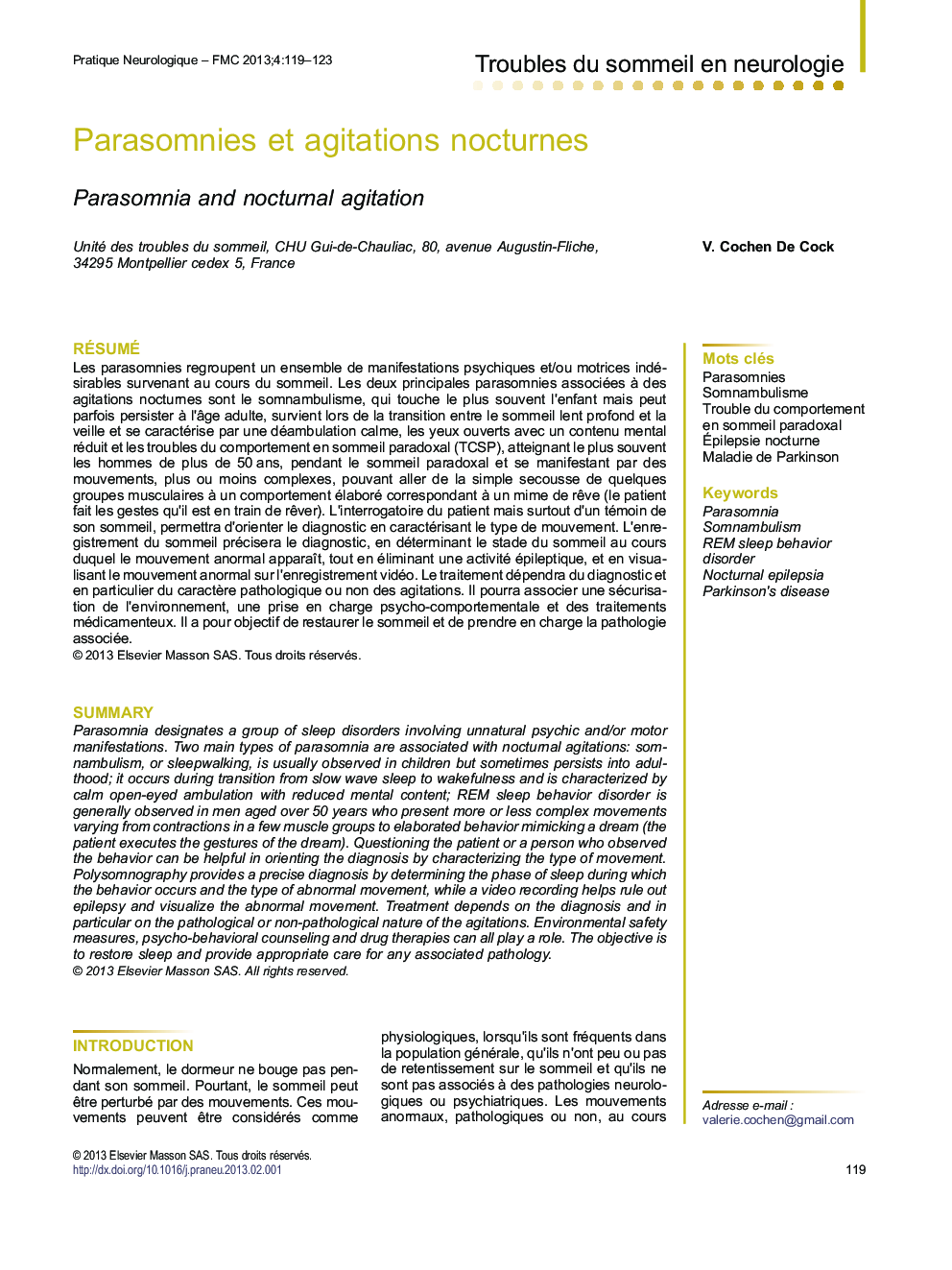| Article ID | Journal | Published Year | Pages | File Type |
|---|---|---|---|---|
| 3087258 | Pratique Neurologique - FMC | 2013 | 5 Pages |
Abstract
Parasomnia designates a group of sleep disorders involving unnatural psychic and/or motor manifestations. Two main types of parasomnia are associated with nocturnal agitations: somnambulism, or sleepwalking, is usually observed in children but sometimes persists into adulthood; it occurs during transition from slow wave sleep to wakefulness and is characterized by calm open-eyed ambulation with reduced mental content; REM sleep behavior disorder is generally observed in men aged over 50 years who present more or less complex movements varying from contractions in a few muscle groups to elaborated behavior mimicking a dream (the patient executes the gestures of the dream). Questioning the patient or a person who observed the behavior can be helpful in orienting the diagnosis by characterizing the type of movement. Polysomnography provides a precise diagnosis by determining the phase of sleep during which the behavior occurs and the type of abnormal movement, while a video recording helps rule out epilepsy and visualize the abnormal movement. Treatment depends on the diagnosis and in particular on the pathological or non-pathological nature of the agitations. Environmental safety measures, psycho-behavioral counseling and drug therapies can all play a role. The objective is to restore sleep and provide appropriate care for any associated pathology.
Keywords
Related Topics
Life Sciences
Neuroscience
Neurology
Authors
V. Cochen De Cock,
